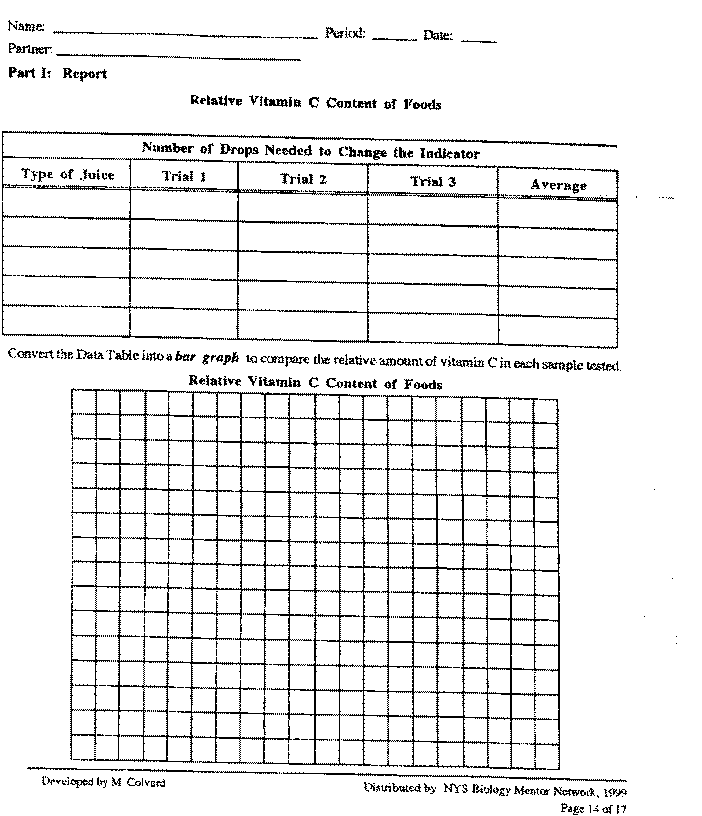
Summer Research Program for Science Teachers
Natalie DiPaolo
Saunders High School, Westchester
2002
Do Different Types of Orange Juice Contain the Same Amounts of Vitamin C?
Background: Vitamin C (ascorbic acid) is found in many fruits and vegetables. Citrus fruits may be the best known, but are not the only significant sources of vitamin C. One important function of vitamin C is maintaining collagen (a protein for the formation of connective tissue in the skin, ligaments, and bones). Vitamin C also helps connective tissue form during the healing of wounds and in the growth and repair of tissues. Other functions of vitamin C include aiding in red blood cell formation, preventing hemorrhaging, and fighting bacterial infections. The human body cannot synthesize this vitamin. Therefore, it must be ingested frequently. Even though certain foods are known for their ability to provide us with vitamin C, a wide range of factors determines how much is actually available by the time you are ready to eat it. The vitamin C content in foods is affected by the plant’s growing conditions; method of processing; storage conditions; and exposure to heat, light or metals.
9-12 Content Standard A- understanding principles of life science
Objectives:
1. To measure and compare the vitamin C content in different types of orange juice samples.
2. To determine the effect of various factors on vitamin C concentration.
3. To design an experiment to test another variable that might affect vitamin C concentration.
8-12 Content Standard A – develop abilities to do scientific inquiry
Content Standard E- develop abilities of technological design
Content Standard F- personal and community health
Materials: vitamin C indicator solution, three 50 mL beakers or medicine cups, one
10 mL graduated cylinder, three disposable pipettes, one stirring rod, sources of vitamin C: bottled, frozen, canned orange juice
Procedures:
1. Pour 15mL of vitamin C indicator into a 50mL beaker.
2. Using a clean medicine dropper, add a drop of one of the orange juice samples to the indicator in the beaker. Swirl to mix or stir.
3. Continue to add orange juice and swirl until the indicator changes from blue to colorless.
4. Count the number of drops needed to change the color and record on data sheet
5. repeat step 4 two more times and calculate the average number of drops.
6. Repeat the steps for each orange juice sample being tested.
9-12 Content Standard A- ability to conduct experiment
Questions:
1. Which type of orange juice was the best source of vitamin C? The worst source?
2. Did your results support your hypothesis?
3. What are some of the factors that may have converted a good source of vitamin C into a poor source?
4. Find out how much Vitamin C the label claims is present in your orange juice samples and determine the milligrams of vitamin C and the volume of juice you would need to consume in order to ingest that dosage.
5. How are vitamins involved in cell metabolism?
6. What are some of the functions of vitamin C in the body?
7. Design an experiment of your own testing another variable. What would your experiment include?
9-12 Content Standard E- develop understandings about science and technology
Content Standard C- understanding of the cell and other aspects of life science

Return to Biology Lesson Plans Menu